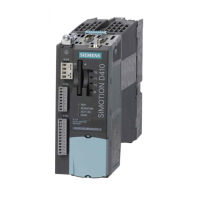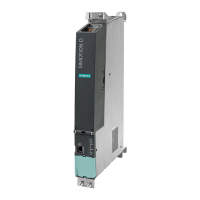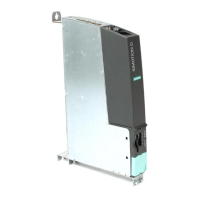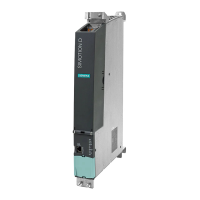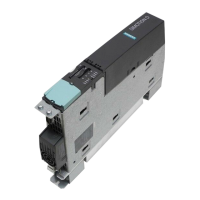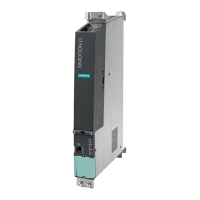Interface characteristics
Table 4-5
X120 and X130
Characteristic Type
Connector type RJ45 socket connector
Cable type Industrial Ethernet cable
Maximum cable length 100 m
Autocrossing no
Dust protection filler plugs for
sealing unused Ethernet ports
5 filler plugs contained in the D4x5 scope of delivery
Filler plugs (50 pcs) order number: 6SL3066‑4CA00‑0AA0
Other The X120 and X130 interfaces are full-duplex 10/100-Mbit Ethernet
ports.
Both ports are wired as Ethernet terminals.
1)
1)
Devices
with Ethernet interfaces can have various pin assignments. In the case of terminal devices,
for example, the send line may be on pins 1 and 2, while pins 1 and 2 on a switch or hub may connect
to the receive line. If two devices are connected using Ethernet, the type of device will dictate whether
a crossed or uncrossed Ethernet cable needs to be used. (For example, a crossed cable is required
if two Ethernet terminal devices are directly connected.)
Pin assignment
Table 4-6 Ethernet interfaces (X120 and X130)
Pin Signal name Signal type Meaning
1 TXP Output Ethernet transmit differential signal
2 TXN Output Ethernet transmit differential signal
3 RXP Input Ethernet receive differential signal
4 --- --- Reserved, do not use
5 --- --- Reserved, do not use
6 RXN Input Ethernet receive differential signal
7 --- --- Reserved, do not use
8 --- --- Reserved, do not use
Note
The
MAC addresses are imprinted on an adhesive label that is located behind the protective
cover and can be seen from the front.
When connecting a PG/PC via Ethernet, the following points must be observed:
● If your PG/PC has an autocrossing function, crossed and uncrossed Ethernet cables can
be used.
● If your PG/PC does not have autocrossing, a crossed Ethernet cable must be used.
● If a hub or switch is located in between, an uncrossed Ethernet cable must be used
(assuming the hub/switch does not have autocrossing).
Interfaces
4.3 Ethernet interfaces
SIMOTION D4x5
Manual, 04/2014 53
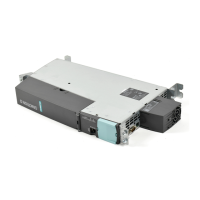
